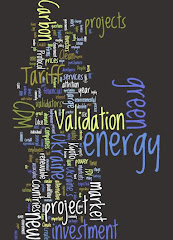For specific results
kindly see the table below, prices denoted in Polish currency (Zlotys). Cheers – Jon
WSE WIG Index
(total return index for Warsaw Stock Exchange listed companies): 44602.83 (+0.37%)
WSE WIG-Ukraine Index
(total return index for Ukrainian listed companies): 641.32 (+0.37%)
Ovostar Union NV
(OVO PW): 79.00 (+1.28%)
Kernel Holding SA
(KER PW): 64.90 (-1.96%)
Agroton Public
Limited (AGT PW): 9.78 (-1.71%)
Astarta Holding NV
(AST PW): 59.00 (+2.08%)
Industrial Milk Co
(IMC PW): 14.30 (+4.38%)
KSG Agro SA (KSG
PW): 10.20 (+3.34%)
Milkiland (MLK PW): 15.25 (+2.35%)
KDM Shipping Plc
(KDM PW): 26.89 (unch)
Coal Energy SA
(CLE PW): 10.35 (+1.47%)
Sadovaya Group SA
(SGR PW): 2.15 (+17.49%)
Westa Intl Scientific
Group (WES PW): 0.97 (-3.00%)Carbon Trading
The ICE daily CER lost 5 cents on Monday, closing at 0.79 EURO (-5.95%). As expected, initial news is that nothing tangible is developing in Doha either for Kyoto or for Europe's ETS. Cheap ERUs and CERs continue to flood the market while countries remain firmly divided over what to do with excess AAU supply in future years. This has been the state of the market for the last 2 years. If Doha is similar to conferences before it, we will see the countries try to reach some sort of loose consensus to "agree to agree" to something by 2015 or 2020. But there likely will be no real descriptive substance to the consensus. If this happens, then we can expect carbon prices to fall throughout the middle of the Doha conference as it appears less and less productive, then bounce near the end of the conference when countries and conference organizers rush to publicize the "agreement" as a positive development. The bounce will be short-lived after analysts have a chance to review the actual text of the agreement and realize it says nothing new and represents no actual progress, it only kicks the can down the road and such can kicking could extend beyond 2015 or 2020. If the USA were to stand up in Doha and agree to firm commitments and link it's emissions reduction efforts to the rest of the world, then we'd really have something. But this does not have high political likelihood as climate change is still a "new" and "controversial" topic in America as we enter 2013, across both Democrat and Republican political parties.


